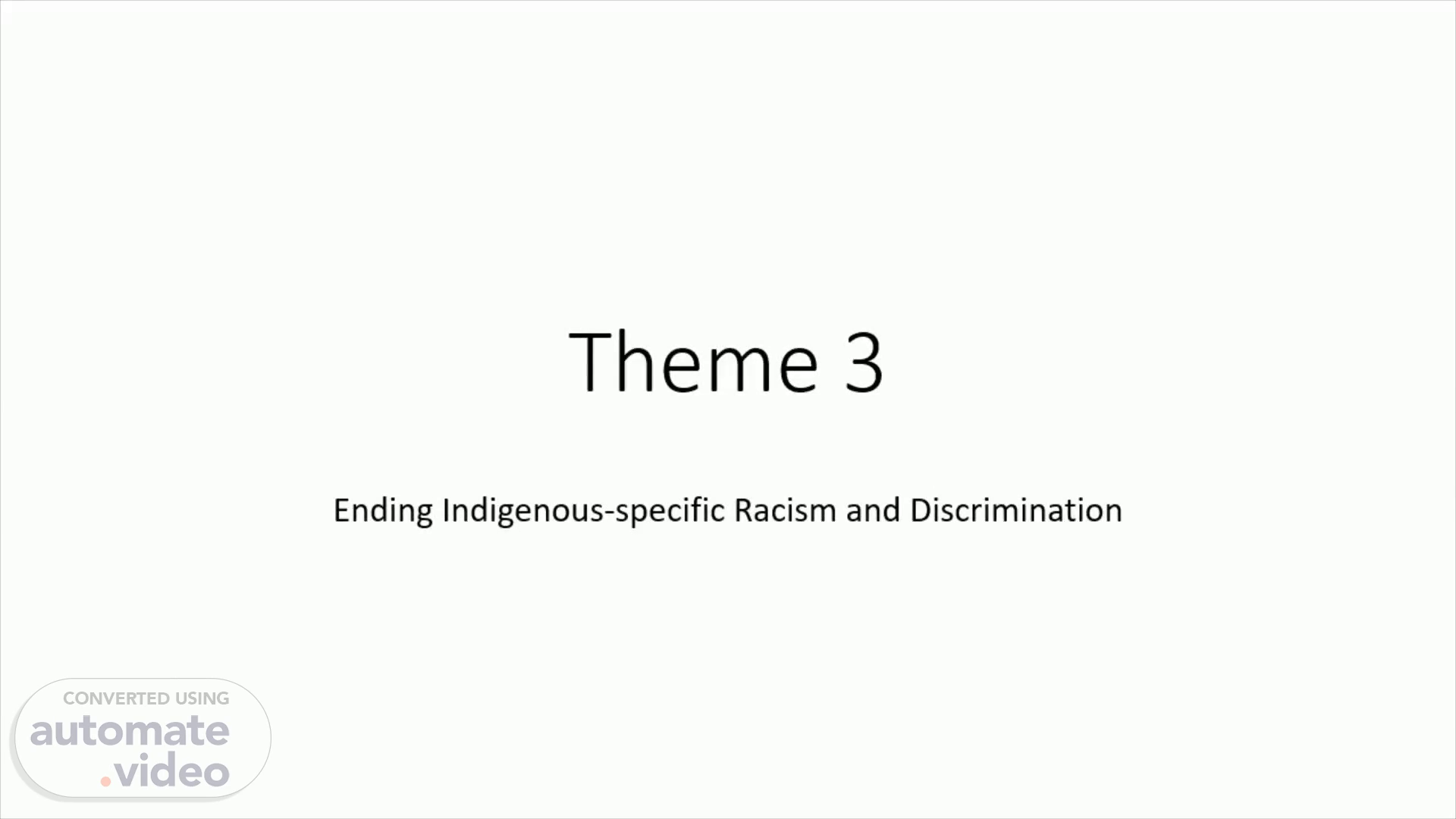Page 1 (0s)
[Audio] Ending Indigenous-specific Racism and Discrimination % TTS_FEMALE[ break]%.
Page 2 (10s)
[Audio] What is Indigenous-specific racism, and why it is important? Basically, it is a theme of a DRIPA action plan which aims to end the racism against indigenous community people, so that they can enjoy their, freedom, respect, land, and resources. It is crucial to stop so that they can live their live happily, and enjoy their living as normal people do with given resources and things. % TTS_FEMALE[ break]%.
Page 3 (41s)
How this is being ended?. There are many normal people, community centers, government policies, and artists who are doing or taking some crucial or effective steps to end this racism and help the community to come out of the struggles and live happily. We are taking examples of one community center here and one artist who are helping to curb down the discrimination..
Page 4 (1m 0s)
Jean Cuthand Goodwill (1928-1997). Jean Cuthand Goodwill, a Cree woman from the Little Pine First Nation, was the first Indigenous person in Saskatchewan and one of the first in Canada to become a registered nurse. When Goodwill was young she contracted tuberculosis and spent a lot of time in and around hospitals and medical workers, which influenced her to become a nurse. In the earlier part of her career, Goodwill worked in rural Saskatchewan and also Bermuda, focusing on helping people in need. Goodwill’s interest in political and community issues grew when she returned to Canada. She helped found the Aboriginal Nurses Association of Canada and served as its president from 1983 to 1990. She was the first Indigenous women to serve as a special advisor to the minister of National Health and Welfare in the federal government and also worked with the Department of Indian Affairs and Northern Development. She taught at the University of Regina, was a Canadian Public Health Association board member and was served a term as president of the Canadian Society for Circumpolar Health..
Page 5 (1m 43s)
Angela Sidney (1902-1991). Angela Sidney was a Tagish woman who spent much of her life preserving the stories of her people. She enjoyed hearing these old stories from her parents and other relatives and to ensure Tagish dances, stories and language continued, she began to teach these traditions to children. She assisted linguists and anthropologists with research to keep the Tagish language alive and was involved in recording oral history and publishing books that contained songs, stories and Tagish place names. In 1986, Sidney became the first woman from the Yukon to receive the Order of Canada for her important work preserving Tagish language and culture. https://newjourneys.ca/en/articles/6-incredible-indigenous-women-every-canadian-should-know-about.
Page 6 (2m 15s)
Desart - an indigenous art centre. Artworks such as these are an important source of creativity and identity for Indigenous Australians (a term used here to refer to Australia’s First Peoples or Aboriginal and Torres Strait Islander Peoples). They date back around 40,000 years and include paintings , drawings, etchings, sculptures, screen printing, weaving, pottery, jewellery and other traditional artefacts such as spears, boomerangs, canoes and fish traps. Indigenous art also provides important economic benefits. When the art market peaked in 2007, Indigenous art was estimated to generate some A$400-500 million a year. This supported 110 Indigenous art centres and about 5,000 art workers (artists). https://theconversation.com/indigenous-art-centres-that-sustain-remote-communities-are-at-risk-the-vet-sector-can-help-121179.
Page 7 (2m 50s)
Indigenous community engagement (Extension program).
Page 8 (3m 11s)
Is it really helping Indigenous people:. Yes, it is because many people are now getting information about the struggles of indigenous community people and helping all of them now to live happily..
